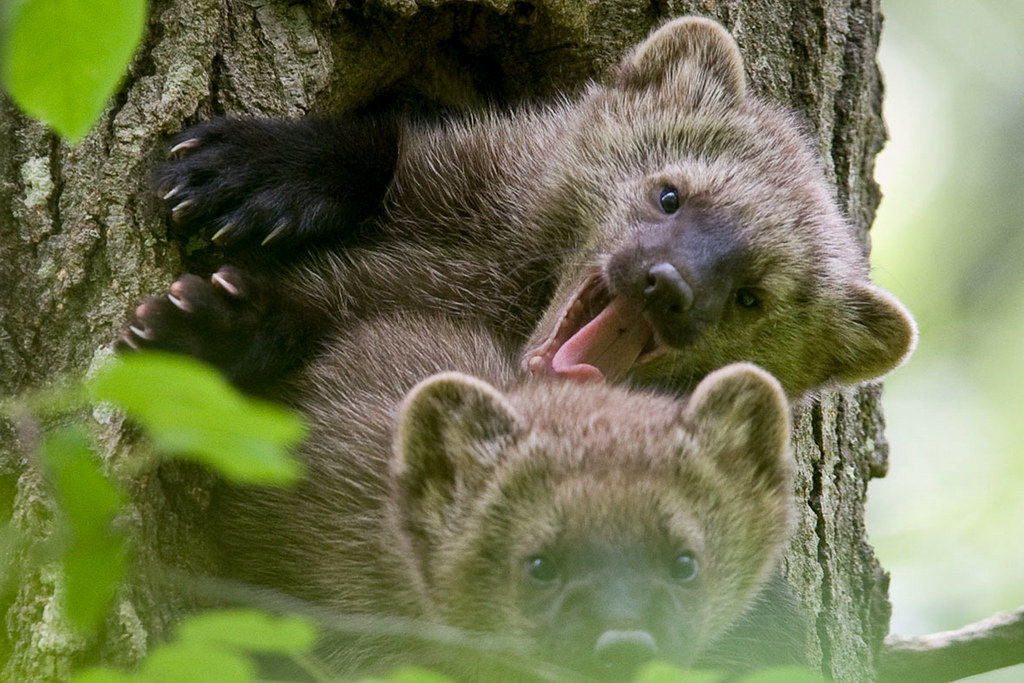Fisher
Pekania pennanti
The fisher is a dark brown furry predator about the size of a house cat. It is rare but can be found in expansive coniferous forests.
This section shows one large critter image at a time. Use the thumbnails that follow to select a specific image to display here.

This gallery contains a grid of small thumbnails. Selecting a thumbnail will change the main image in the preceding section.
Appearance
The fisher is a brown furry mammal with black bushy tail and short black legs. Sometimes, it will have a whitish patch on its chest. Fishers are part of the weasel family and have a similar long body shape. They are about the size of a house cat. Males are larger and tend to weigh around 12 pounds, while females average eight pounds.
Feeding
Fishers are primarily predators that eat other small mammals—like squirrels, mice and shrews—carrion (flesh of dead animals), frogs and birds. They also sometimes eat berries and fruits. Fishers are able to climb trees to hunt, and can fit into holes or burrows to hunt prey that tries to hide in the ground.
Predators
Young fishers are vulnerable to predation from large mammals, like bobcats and foxes, or birds of prey.
Voice
Fishers communicate with each other primarily by marking an area with their scent. They growl or hiss when upset.
Reproduction and life cycle
Fishers breed in the early spring between March and May. After an 11-12 month gestation period, the female gives birth to a litter of between one and six blind, mostly hairless young that she raises on her own. The den is built in a hollow tree high off the ground. The juveniles take around 50 days to open their eyes. They learn to hunt at around four months and become independent about a month later. Females reach sexual maturity at one year, males at two.
Did you know?
- Despite its name, the fisher doesn’t eat fish. Instead, the name comes from “fitch,” which refers to a polecat—a similar-looking mammal native to parts of Europe and Asia.
- Fisher cats tend to favor coniferous trees, including spruce, white cedar and fir. They live on their own and are active during the day and night.
- The loss of large stretches of coniferous forests has led to declines in fisher populations, but reforestation has helped them rebound in certain areas. However, the Sierra Nevada population is still so low, it has been proposed for listing as an endangered species.
- Fishers are one of the few predators for porcupines. They flip the porcupines over to avoid their sharp quills when they eat them.
- The fisher was formerly known by the scientific name Martes pennanti. The classification was changed in 2015 to Pekania pennanti.
Sources and additional information
- Animal Diversity Web: Martes pennanti – University of Michigan
- Maryland Mammals: Fisher – Maryland Department of Natural Resources
- Pekania pennanti – U.S. Forest Service
